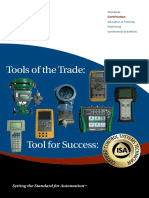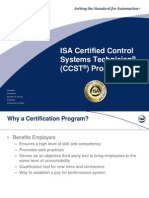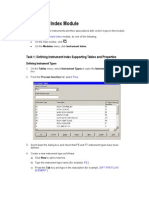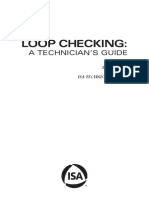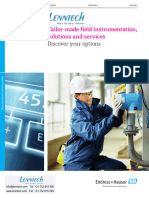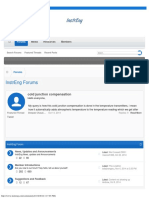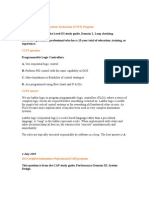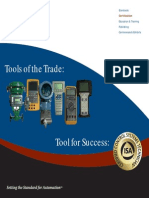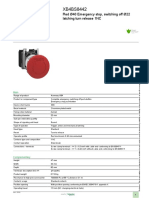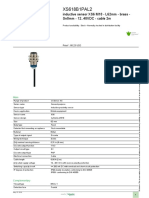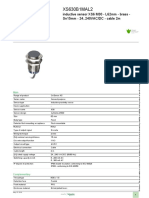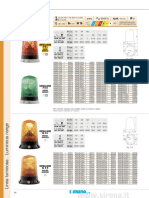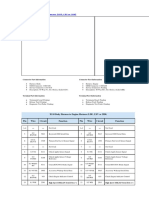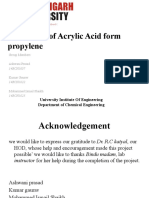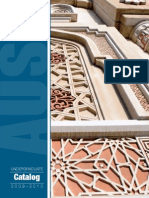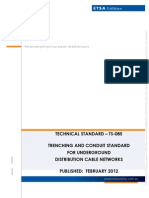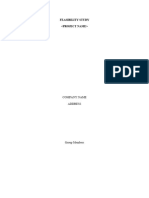ISA Seminars on the Web Live Experts on Hot Topics
Standards Certification Education & Training Publishing Conferences & Exhibits
Introduction to Process Control
FG05W1 Version 1.3 2010
Standards Certification Education & Training Publishing Conferences & Exhibits
2010 ISA FG05W1 (1.3)
�Seminar Logistics
Seminar materials
Downloadable presentation Question and Answer session (audio and email) Survey Earn 1.5 Professional Development Hours (PDH)
Seminar length
90 minute total presentation Three approximately 20 minute instructional presentations Three approximately 10-minute question and answer sessions
Audio Instructions
Please note the following during the seminar: As a participant, you are in a listen-only mode. You may ask questions via the internet, using your keyboard, at any time during the presentation. However, the presenter may decide to wait to answer your question until the next Q&A Session.
2010 ISA FG05W1 (1.3)
�Audio Instructions for Q & A Sessions
Questions may be asked via your telephone line. Press the *1 key on your telephone key-pad. If there are no other callers on the line, the operator will announce your name and affiliation to the audience and then ask for your question. If other participants are asking questions, you will be placed into a queue until you are first in line. While in the queue, you will be in a listen-only mode until the operator indicates that your phone has been activated. The operator will announce your name and affiliation and then ask for your question.
Introduction of Presenter
Instructor
Name: William (Tim) Shaw PhD, CISSP Background/experience: Over 30 years of experience with computer based automation systems including developing three generations of DCS systems and two generations of SCADA systems. Former Adjunct Professor in the Graduate Engineering department of Loyola College in Baltimore. Authored books on Batch Process Control and on SCADA Cyber Security. Currently the Senior Consultant for Cyber SECurity Consulting, an industrial automation cyber security firm. Tim periodically teaches courses for ISA and IEEE. Email: timshaw4@verizon.net
2010 ISA FG05W1 (1.3)
�Goals of this training session
Discuss the operation and components of a feedback control loop Explain the role of measurement and control in industrial processes Interpret measurement and control technology Discuss the fundamental concepts of controller tuning
Section 1: Basics of Process Control
Process/Process Control Defined Process Control Loop Measurement Loop Control Loop Setpoint Steps
Measure Compare Decide Action
P&ID drawings
2010 ISA FG05W1 (1.3)
�Definition of a Process
A process is a part of a manufacturing plant in which material or energy is converted to other forms of material or energy
Change in pressure, temperature, speed, electrical potential, etc.
Basic Feedback Loop
10
2010 ISA FG05W1 (1.3)
�Process Control Loop
Process Control: the regulation or manipulation of variables influencing the conduct of a process in such a way as to obtain a product of desired quality and quantity in an efficient manner
11
Control Steps
12
2010 ISA FG05W1 (1.3)
�Process Pictorial
13
Another Pictorial View
14
2010 ISA FG05W1 (1.3)
�Control Loop on a P & I D
Steps Again
Measure
Quantify Standardize
Compare
To Desired Value (Setpoint)
Decide
How much How long How quickly
Action
Manipulate Variable
16
2010 ISA FG05W1 (1.3)
�Feedback
Because you take information about a process output and use it to control a process input (feedback) Process must be upset before deviation can be measured Always a lag in action due to steps
17
Review of Key Items
Process/Process Control Defined Process Control Loop Measurement Side Control Side Setpoint Steps
Measure Compare Decide Action
P&ID drawings
18
2010 ISA FG05W1 (1.3)
�Question and Answer Session
During Q&A, questions may be asked via your telephone line. Press the *1 key on your telephone key-pad. If there are no other callers on the line, the operator will announce your name and affiliation to the audience and then ask for your question. If other participants are asking questions, you will be placed into a queue until you are first in line. While in the queue, you will be in a listen-only mode until the operator indicates that your phone has been activated. The operator will announce your name and affiliation and then ask for your question.
19
Section 2: The Measurement Loop
Process Variables Instrument Zero Instrument Full Scale Standard Signals Engineering vs. Percent Accuracy Repeatability Other Measurement Terminologies Ranging and Calibration
20
2010 ISA FG05W1 (1.3)
�Process Variables
The following variables (one or more) will be found in the majority of process control applications:
Flow Level Pressure Temperature
There are many others, yet those above are found most often.
21
Flow Measurement Volumetric
Positive Displacement
(gallons per minute, cubic feet per minute, liters per minute, etc.)
Mass
Coriolis Mass Thermal
(pounds per hour, kilograms per hour, etc.)
Velocity
Magnetic Oscillatory Turbine Ultrasonic
Inferential
Differential Pressure Target Variable Area
22
2010 ISA FG05W1 (1.3)
�Pressure
Pressure Is Force Per Unit Area
23
Level Measurement
WHERE
HOW MUCH
How far from full How far from empty How much material
24
2010 ISA FG05W1 (1.3)
�Temperature Measurement
How much heat energy?
25
Standard Signal Concept
26
2010 ISA FG05W1 (1.3)
�Standard Signal for Flow
27
Repeatability vs. Accuracy
2010 ISA FG05W1 (1.3)
�Zero & Span Errors
100% MEASURED VALUE ERROR CAUSED BY INCORRECT ZERO 0 100% TRUE VALUE HIGH SPAN 100% IDEAL SPAN LOW SPAN ERROR CAUSED BY SPAN
MEASURED VALUE
TRUE VALUE
100%
29
Non-linearity Error
100%
MEASURED VALUE
ERROR CAUSED BY NONLINEARITY
TRUE VALUE
100%
30
2010 ISA FG05W1 (1.3)
�Other Terminologies
Resolution
Smallest scale increments
Sensitivity
Smallest detectable change
Hysteresis
Difference in measurement output when measuring input ascending and descending
Dead band
Range in which input signal may change upon reversal of direction without causing measurable change in output
31
Ranging (or Scaling) vs. Calibration
Ranging changes the Instrument zero and/or Instrument Span Range is always given as from , to
Instrument zero is set to lower range value Instrument span is set so 100% = upper range value
Modern Instruments do not have to be calibrated upon a range change. Calibration means to compare this instruments readings for a selected set to a measurement standard in a standardized environment. And adjust if necessary Some of the more modern test instruments are shop standards Smart Instruments have their own built in standards, or at least characterization curves for sensor linearization.
32
2010 ISA FG05W1 (1.3)
�Review of Key Points
Process Variables Instrument Zero Instrument Full Scale Standard Signals Engineering vs. Percent Accuracy Repeatability Other Measurement Terminologies Ranging (Scaling) and Calibration
33
Question and Answer Session
During Q&A, questions may be asked via your telephone line. Press the *1 key on your telephone key-pad. If there are no other callers on the line, the operator will announce your name and affiliation to the audience and then ask for your question. If other participants are asking questions, you will be placed into a queue until you are first in line. While in the queue, you will be in a listen-only mode until the operator indicates that your phone has been activated. The operator will announce your name and affiliation and then ask for your question.
34
2010 ISA FG05W1 (1.3)
�Section 3: Control Loop/Controllers
Two Wire Loops Output Signals Transducers Valves Actuators Controller Action On-Off Proportional Only Proportional-Integral Proportional-Integral-Derivative Tuning
35
Two Wire Loop
36
2010 ISA FG05W1 (1.3)
�Transducers
Many Final Control Elements in continuous control are valves, and valves use a pneumatic actuator. Most controllers are electronic and have an electronic output. A transducer (I/P) is used to provide an interface.
37
Current to Pneumatic (I/P) Transducer
Used to convert current signal to pressure signal
2010 ISA FG05W1 (1.3)
�Control Valves
39
Typical Pneumatic Actuator
40
2010 ISA FG05W1 (1.3)
�Typical Pneumatic Valve Positioner
41
Controller Action
42
2010 ISA FG05W1 (1.3)
�On-Off Control
43
Proportional Control Algorithm
44
2010 ISA FG05W1 (1.3)
�PI Algorithm
Integral action also known as reset average error over time
m = Kc e +
Gain adjustment
1 edt Ti
(minutes per repeat)
Integral Time Adjustment
Integral action is used to eliminate the offset that occurs in a proportional controlled process when a load change or continuing error to one side of set point occurs. Operates on duration of error
45
PID Algorithm
Derivative action also known as rate Rate of error change over time
=
gain adjustment
+
derivative time adjustment (minutes)
integral time adjustment Derivative is used on slow processes to reduce over/undershoot, providing less excursion from setpoint and a quicker first return to setpoint. Operates of the rate of error change.
46
2010 ISA FG05W1 (1.3)
�Tuning Objectives
Adjustment of gain, reset, and rate to achieve good process control
47
Action Summary
ACTION On-Off Proportional Integral Derivative
OPERATES ON Presence of error Magnitude of error Duration of error Rate of Change of error
48
2010 ISA FG05W1 (1.3)
�Review of Key Steps
Two Wire Loops Output Signals Transducers Actuators Valves Controller Action On-Off Proportional Only Proportional-Integral Proportional-Integral-Derivative Tuning
49
How Many People Are at Your Site?
Poll Slide Click on the appropriate number indicating the number of people that are at your site.
2010 ISA FG05W1 (1.3)
�Question & Answer Session
During Q&A, questions may be asked via your telephone line. Press the *1 key on your telephone key-pad. If there are no other callers on the line, the operator will announce your name and affiliation to the audience and then ask for your question. If other participants are asking questions, you will be placed into a queue until you are first in line. While in the queue, you will be in a listen-only mode until the operator indicates that your phone has been activated. The operator will announce your name and affiliation and then ask for your question.
51
Related ISA Courses
FG07 Introduction to Industrial Automation and Control TC05 Tuning Control Loops TS00 CCST Review Course
All ISA courses are available any time as on-site training For more information: www.isa.org/training or (919) 549-8411
52
2010 ISA FG05W1 (1.3)
�ISA Certifications
Certified Automation Professionals (CAP )
www.isa.org/CAP
Certified Control Systems Technician (CCST)
www.isa.org/CCST
Please visit us online for more information on any of these programs, or call (919) 549-8411.
53
Please take our Web Seminar Survey via Zoomerang The seminar survey was sent to you via email during the seminar. Please do not forget to complete the Zoomerang survey.
2010 ISA FG05W1 (1.3)
�Conclusion
This is the end of: Introduction to Process Control
55
2010 ISA FG05W1 (1.3)


